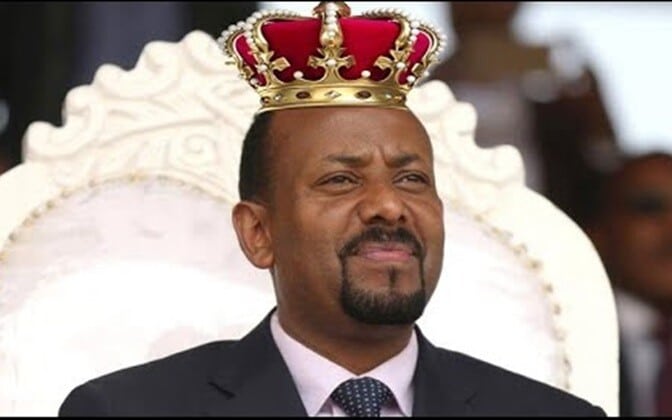 Abiy Ahmed Ali: Evaluating His Role as the Fifth Orommuma Lubaship Headman, The New Breed of African Dictator, or the Prochazka Enabler – Unraveling the Historical Context of the Current Situation in Ethiopia.
Abiy Ahmed Ali: Evaluating His Role as the Fifth Orommuma Lubaship Headman, The New Breed of African Dictator, or the Prochazka Enabler – Unraveling the Historical Context of the Current Situation in Ethiopia.
Mintiwab Legesse, Virje Universiteit, Amsterdam, Netherlands.
- Introduction:
This article aims to explore the root causes and consequences of the 21st Century suffering of the Amhara people in Ethiopia. It is structured into concise narratives that unveil the historical unfolding of events, involving the roles played by colonialists, separatists, and ethnonationalists, contributing to the present political challenges in Ethiopia. The content adopts a descriptive historical format, presenting the issues as they transpired over time. The topics incorporate a brief compilation of factual information, sourced from reliable outlets and firsthand memoirs, complemented by substantial documentation, including detailed historical records, and locations.
The resilience of the Amhara people represents a survival narrative in the face of adversity. This paper provides readers with a vivid portrayal, enabling them to envisage the conditions preceding the current state of Ethiopia and how these events have led to the prevailing state of instability. The spread of the Oromo ethnonationalist ideology, known as “Orommumma” can be traced back to its roots. Over time, it has been co-opted for self-interest and orchestrated through deceptive political maneuvers.
- The Ethiopian Statehood:
II.1. The Amhara People and Their Significance in the Statehood
As modern humans embarked on their migration from Africa around 60,000 years ago, their journey spanned across the globe, reaching every corner of the Earth. In the historical account presented by Donald Lewis Donham in “Work and Power in Maale,” Ethiopia (p. 13),[7] it is documented that one group returned to Ethiopia from Southern Arabia. Over the course of at least 3,000 years, and likely even longer, the highlands of Ethiopia have been home to the spoken languages of Semitic Cushitic and Omotic, all of which share genetic connections. [17] [12] [20]
The term “Amhara” is a reflection of the ancient amalgamation of Semitic and Cushitic lineage, as described by Augustus Henry [2]: “When the Agazi crossed the Tekkeze and expanded their conquest southwards, they became increasingly intertwined with the Agao. Consequently, the Southern Abyssinians of Amhara and Shoa emerged as mixed Hamito-Semitic people. They adopted their name from the original Hamra (Amhara) inhabitants of the Central Provinces” (excerpt from “Values in Islamic Culture and the Experience of History,” (Vol. 1, p. 309).
Highlighting their enduring influence, it is noted that since the 13th century, the Amhara have consistently held a prominent role as the leading political power and key contributors to state-building in Ethiopia. As empire builders, their ethno-political consciousness and self-identity have been closely linked to the state’s name, initially with the Abyssinian State and subsequently with the Ethiopian Empire, leading to the identification of the people as Abyssinians and later as Ethiopians.[15]
II.2. The Oromo People and Their Significance in the Statehood
The Oromo people of Ethiopia played a crucial role in the formation of Ethiopian Statehood, contributing to it through a migration history shaped by various reasons. This is evident in historical documents that unfold the details of this process. Moreover, Oromo leaders played pivotal roles in Ethiopia’s political and military history, attaining prominent positions within the Ethiopian Empire. [19] [23]
For insights into the history, of the Oromo Migration and the Gada, or age group system, one can refer to “Bahrey’s” [4] [9] account in “History of Galla/Oromo,” documented in Beckingham and Huntingford (1954, p. 111-39), M. Abir, Ethiopia, and The Read Sea, 1980, Frank Cass and Company, p.136-7, [1] [16] as well as Mohamad Hassan (1990). [15]
The expansion of the Oromo, believed to have originated in Bale in the far south of the empire, appears to have commenced shortly after or around the time of Imam Ahmed’s initial Islamic Jihad incursion in Ethiopia. The momentum of Oromo’s advancement surged notably after the demise of the Muslim warrior in 1543 and the subsequent collapse of his government, creating a power vacuum. Seizing this opportunity, the Oromos occupied extensive areas in the southern and eastern Ethiopian highlands.[17]
A contemporary Ethiopian monk, Aba Bahrey, [9] documented the Oromo advance to the succession of Gala/Oromo Lubas, or age groups. Raids and forays were carried out during the Lubaship of Melbah (1522-60), who first invaded Bali. Subsequently, during the Lubaship of Kilole (1522-30), the Oromos penetrated the Dawaro/Harar lowlands and advanced into Fatagar during the Luba Bifole (1546-54), establishing a more prominent presence. The Oromo expansion continued through the Lubaship of Mesle or Mechelle (1554-62).
By 1570, taking advantage of the Amhara topography, the Baratuma Oromos [1] [6] initiated raids westwards into Gojam and Dembiya. In the 1570s and 1580s, utilizing Angot and Amhara as their main bases, the Karayu-Azebu subgroup pillaged Tigre, Begemdir, Northern Shoa, and parts of Gojjam. Following Emperor Serte Dingele’s departure in 1572, the Borena resumed their westward advance, penetrating Shoa by 1576/7. In subsequent years, various Mecha clans moved west of Shoa, raiding Gojjam across the Abay. [1]
During the 1580s, as the Abitchu penetrated Southern Shoa, the Mecha and related groups occupied Bizamo and overran significant portions of Damot. “Bahrey” reports that the Oromo adopted the practice of riding horses, enhancing their mobility and facilitating their expansion. In the same period, Jean Doresse’s account (Ethiopia, 149-159) [10] notes the Christian Emperor Tsertse Dingle’s decision to abandon Shewa, then the capital named Barara, [10] at the present location of Addis Ababa, and relocate the Christian monarchy to safer grounds, away from Lake Tana, due to the prolonged effects of war.
III. The Prochazka: An Emblem of the Italian Colonial Project Post WWII, Fragmenting Ethiopia Along Ethnic Lines: A Contemporary Predicament in the 21st Century.
One of the numerous colonialist propaganda pamphlets deemed a hallmark of the Italian colonial project has been embraced by various factions throughout Ethiopian history, including separatists, left-leaning Ethiopians, and present-day ethnonationalists.[18] This propaganda advocates for the fragmentation of Ethiopia along ethnic lines, utilizing the principles of self-determination attributed to “Prochazka,” an Italian WWII propagandist. This agenda, conceived as retribution for Emperor Menelik’s victory at the Battle of Adwa, poses a significant threat to Ethiopian nationalism and the broader narrative of black history. [8]
Prochazka’s assertion challenges the notion of a united Abyssinian people, contending that non-Christian tribes harbor a fervent desire to be liberated from the perceived tyranny of the “Amhara people.” According to Prochazka, the diverse peoples and tribes within the Ethiopian state, differing in race, language, culture, and religion from the ruling Abyssinians (Ethiopians), would have sought independence long ago, if granted the right of self-determination. Instead, they were forcibly isolated from European influences, hindering the benefits that progressive colonization could bring.
This idea during WWII led to the division of the country into ethnic territories by the occupiers, namely: Eritrea, Amara, Galla (Oromo)/Sidamo, Harar, and Shoa/Scioa, which served as a foundation for understanding the historical dynamics. [5] [18]
Following the overthrow of the Derg in 1991, the EPRDF, “the black apartheid regime,” adopted this strategy [13] and continued this divide-and-rule strategy by splitting the country into ethnic administrative regions.
As discussed by Assefa Negash, M.D., [3] the present Ethiopian constitution, especially ‘Article 39,’ operationalizes the colonial blueprint, creating two distinct groups within each ethnic administrative region. The first group, considered indigenous or “sons of the soil,” receives preferential treatment in terms of rights compared to the second group, often viewed as ethnic minorities and relegated to second-class citizenship.
Abiy Ahmed’s government has adopted these divisive policies further, surpassing the EPRDF’s plan [24]. The new arrangement results in a broader geographical, political, economic, and social marginalization of various ethnic groups,[21] with a particular focus on dismantling and annihilating the “Amhara Nation.”
- Concurrent Storyline
The concept of “Orommumma” is associated with the misconstrued 16th Century’s bygone migration, economic, and social dynamics. As a demonstration, at the epicenter of the current Orommumma strategic maneuver, one of the key figures, “Lt General Getachew Gudina“[14] is instrumental in Abiy Ahmed’s pursuit of his objectives during the Amhara onslaught. He conducted a confidential gathering in Adama/Nazret town, during which he openly shared information with prominent Oromo political elites and senior military leaders.
He stated (translated): “Initially, in collaboration with the Tigray Defense Forces (TDF), our goal is to defeat Isaias Afwerki of Eritrea. With the Tigrayans seeking retribution against Eritrea, we have allied, reaching a consensus. After overcoming Shabia (the Eritrean Army), our next step is to dismantle our common adversary, the Neftegnas (the Amharas). The Tigrayans are motivated to retaliate against the Amhara due to their cooperation with the Ethiopian National Army during the Tigray War. We will continue to collaborate in this phase. Once all these objectives are accomplished, the ‘Oromos’ aim not only to govern the country for a hundred years but to rule Ethiopia for the next thousand years.”
The politician’s address to his ethnic community was divisive, openly revealing his ambitious plans. This sentiment is shared by his followers, reflecting similar aspirations. If you’ve witnessed one, you’ve essentially observed them all.
- Examining the Present State in Ethiopia
Every nation is composed of diverse ethnic groups that form a country. There is always a typical larger group shaping the foundation of the state. In the case of Ethiopia, the Amhara and the Oromo nations consisting of the majority groups have coexisted harmoniously for centuries, contributing to the nation’s rich history.
Human migration on the other hand is a universal phenomenon influenced by factors such as population pressures, resource availability, and conflict resolution. As a common rule, it is a global journey; when, how far, and fast depends on the pressures of the population, grazing lands, acquiring of horses and fighting skills, or some other reasons. However, in the Ethiopian scenario, regardless of the journeys traveled and/or the period they lived in, all Ethiopians are sailing together in the same ship. The entire population finds itself united under the Ethiopian banner. However, Ethiopia faces a unique challenge in determining its governance, the central issue lies in the type of government that guides the nation.
The Amhara people, having resided on their native land for over three thousand years, [15] [17][20] played a pivotal role in the formation of an empire that embraced various nations. However, a collective conspiracy, reminiscent of historical events, has led to their subjugation.
This historical narrative echoes in the 21st century, where an ethnocentric government, driven by the ideology of “Orommumma,” has caused inconceivable misery and unrest. Daily acts of violence against the Amhara people, fueled by distorted narratives, raise concerns about open aggression within their backyards.
The current government led by Abiy Ahmed Ali and the Prosperity Party, is compared to the captain of Plato’s allegorical ship. In the allegory, the ship represents the state or society, and the sailors represent the citizens. The captain of the ship represents the philosopher-king, who possesses wisdom and knowledge and is best suited to lead the state. On the contrary, the ship Abiy Ahmed sailing has been rocked and marred by major wars, and destructions, with a disruptive ideology steering Ethiopia into an uncertain future. Citizenship rights are compromised, denying free movement even to the extent of not allowing the Amharas to enter their capital city, Addis Ababa; their ancestors’ city during the 14th Century, as documented and identified as Barara, [10] destroyed by Imam Ahmed Gragn during the Muslim incursion. Barara, the age-old capital, served as both the King’s residence and the Chief Patriarch’s seat. It functioned as a prominent trading center, attracting Venice merchants who engaged in trade, along the route from Barara to Cairo, Alepa (Alepo), Cunstintinia (Constantinople), Farse (Persia), Norway, and Russia. [10, (p. 31)]
Wise and effective leaders explore alternatives to warfare, choosing governance without resorting to violence. Regrettably in Ethiopia, the government consistently deals with crisis after crises, seemingly unable to learn lessons from the rich history of the country or from the circumstances of the past two years; neglecting the opportunity to avoid mistakes and forge better paths for Ethiopia.
Abiy Ahmed’s administration is accused of creating an “internal colonialism,” displacing and demolishing the homes of about half a million people from the outskirts of Addis Ababa, mainly targeting the Amharas and fostering crises. The Amhara people were victimized for half a century.[3] This time, however, is on a massive scale, and openly, with a mechanized war including the use of Turkish and UAE-made drones on its citizens.
Allegations include human rights violations, [11] [22] high levels of in-group favoritism and ethnic networking, economic mismanagement, massive corruption, unlawful detentions, mass killings, lawlessness and abductions, ethnic cleansing, and political favoritism.
Whether you call Abiy Ahmed Ali the new breed African dictator, an ethnocentric leader, the Prochazka enabler, or all, real power doesn’t reside with those who decide what qualifies their choices. The Amhara people have shown their grievances peacefully for decades, however, the only choice left for them is, one and only one, to perish. Their current struggle for existence against discrimination, marginalization, and annihilation is portrayed as a battle against the plot of the destructive forces of the current Ethiopian government, fueled by the ethnocentric party, orchestrated by Abiy Ahmed Ali and his collaborators.
God Bless Ethiopia!!
VII. Citation References
- Abir, Mordechai. Ethiopia and the Red Sea: The Rise and Decline of the Solomonic Dynasty and Muslim-Rivalry European Rivalry in the Region.London, Cass, 1980.
- Augustus Henry Kaene, “Africa,”2012 p.495.
- Assefa Negash, M.D. Amesteiveen, the Netherlands,18th April 2012.
- Aṣma Giyorgis and Bairu Tafla. Asma Giyorgis and His Work: History of the Gāllā and the Kingdom of Šawā. F. Steiner Verlag, 1987
- Baron Roman Prochazka, “Abyssinia the Powder Barrel, 1934. Beckingham, C.F. and Huntingford, G.W.B (trans.) The Prester John of the Indies, 2 Vol, Hakluyt society (Cambridge, 1961) (PP. 119-29).
- Ceruli, E., Storia della lettatura Ethiopia, (translation), Rome, 1956.
- Donham, Donald L. Work and Power in Maale, Ethiopia., 1985. p.13.
- Donald L. Donham, Work and Power in Maale, Ethiopia, Studies in Cultural Anthropology, No. Michigan: UMI Research Press, 1985, 196 Pp., ISBN 0 8357 1557 4.” Africa, vol. 58, no. 2, Apr. 1988, pp. 245–46. DOI.org (Crossref), https://doi.org/10.2307/1160673.
- Getachew Haile. Ye Aba BahrIy Dirsetochoromochin kemmimmelekketu leloch senedoch gara (Amharic) Collegeville (Minnesota,) 1995 EC.
- Habtamu Mengiste Tegegn. Barara: kedamawit Addis Ababa, The Red Sea Press, Trenton, 2020.
- International Convention on the Elimination of All Forms of Racial Discrimination, 21 December 1965. UN General Assembly resolution 2106 (XX)https://www.ohchr.org/en/instruments-mechanisms/instruments/international-convention-elimination-all-forms-racial.
- Jean Doresse “Ethiopia”Elek Books, 1960. p.149-150.
- Konjit Sitotaw “የህወሃትቡድንፋሽስት ጣሊያን የነደፈውን ካርታ ተጠቅሟል።- ሜጀር ጀነራል ጌታቸው”
March 16, 2021 – https://mereja.com/amharic/v2/473209
- Lt General Getachew Gudina, ሌ/ጀነራልጌታቸውጉዲና “በአዳማው የኦሮሞ የፖለቲካና የመከላከያ ከፍተኛ አመራሮች ሚስጥራዊ ስብሰባ ቃል በቃል ያስተላለፈው መልዕክት ነው::”
https://x.com/TMA1961/status/1737365574307533191?t=izYEWdlDkebVkQbK1ETh7g&s=08
- Melaku Tedla, Kibre Amhara(Amharic)“The Glory of the Amhara: A Pillar of Our Identity “(Amharic Edition), 2017 p.338.
- Mohammed Hassen, The Oromo and the Christian Kingdom of Ethiopia1300–1700. Woodbridge: James Currey. 2015 400 pp.
- Pankhurst, Richard. The Ethiopians: Blackwell publishers, Wiley, Feb 14, 2001.
- Prochazka, Baron Roman. “Abyssinia the Powder Barrel”, 1934.
- Taddesse Tamirat, “Church and State in Ethiopia: 1270-1527, Tsehay Publishers and Distributors, 1972.
- The Rise of Aksum History of Africa with Zeinab Badawi [Episode 5] & African History Egypt, Ethiopia & Sudan.
21.” The Trouble With Ethiopia’s Ethnic Federalism.” by Mahmood Mamdani, The New York Times,
Jan. 3, 2019. https://www.nytimes.com/2019/01/03/opinion/ethiopia-abiy-ahmed-reforms-ethnic-conflict-ethnic-federalism.html
- United Nations Human Rights Office of the High Commission, Special Rapporteur on contemporary forms of racism.Resolution 1993/20. https://www.ohchr.org/en/special-procedures/sr-racism/about-mandate
- Yilma Deressa (Bilata). Ye-Ethiopia Tarik Be Asra Sidistegnaw Kifle Zemen(Amharic), Addis Ababa, Birhanina Selam, 1959.
- Yimer Ali, “Abiy’s Official Declaration of War: Unleashing an Open Season of Attacks on Amharas Across Ethiopia”. August 4, 2023. https://mereja.com/index/457225





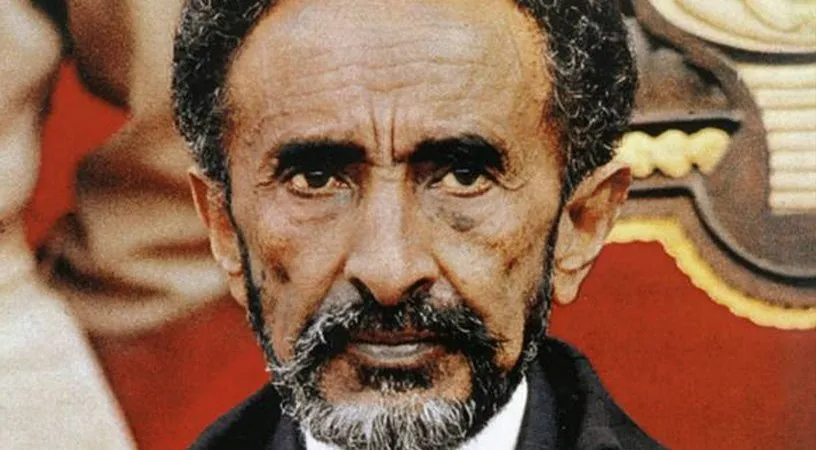

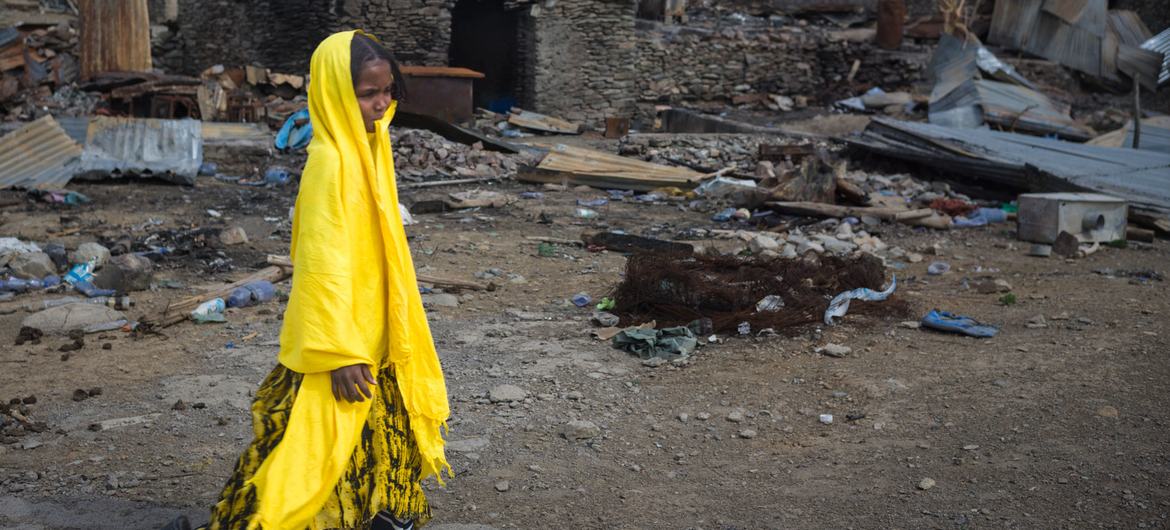



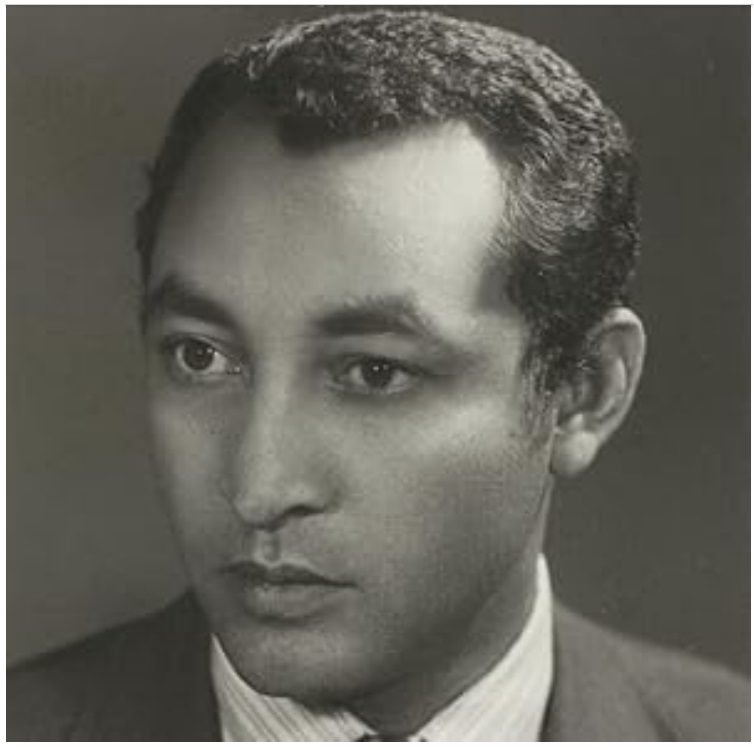


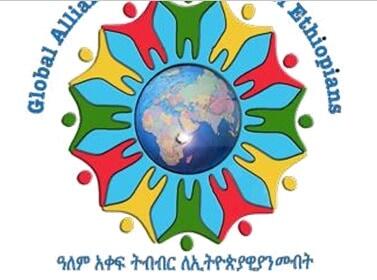
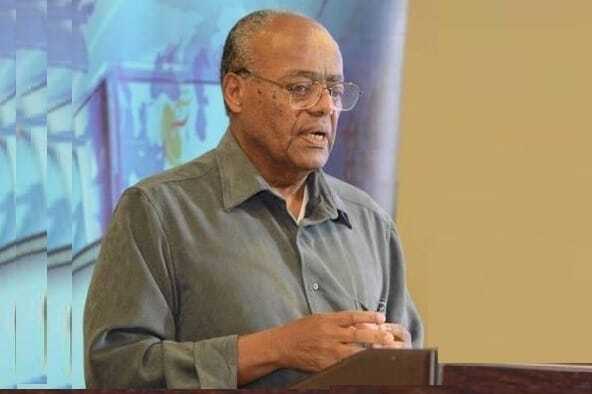
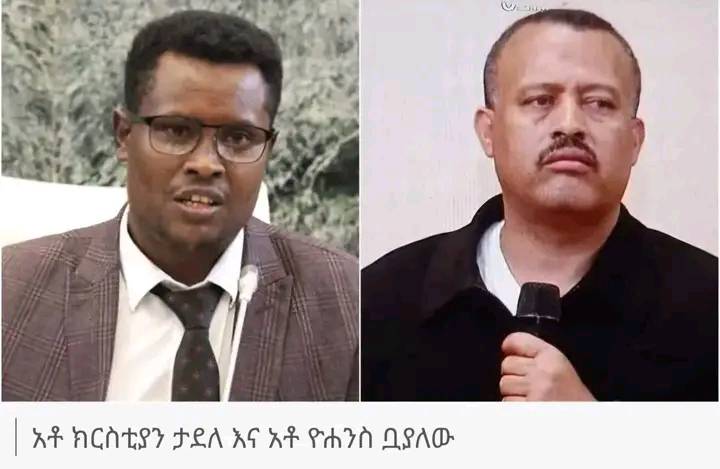

It is a well written article can be constructive conversation starter. I or others may have different views on some of the points in the article but still it is an honest endeavor by the author. Keep writing sir/madam!
It just amazes me to observe how some of us crave to see Somalia and Ethiopia go to war because of MOU knowing the fact that fighting will render both nations weakest they have ever been leaving them with utter destruction that will take generations to rebuild. It shows how these daydreamers have deep seated hatred for the peoples of both countries. Just bonafide bigots!!!
Abyi and his governance has another dangerous trait that is rarely mentioned. He is a follower of the Prosperity Gospel and has allowed his religious beliefs to migle with the country’s governance and decision making. The Orthodox Christians and Muslims who make up to 90% of the population don’t know and comprehend what this means. There are documentaries on YouTube explaining this “theology”, but in short he believes that faith, positive speech and DONATIONS to their church will increase one’s material wealth! Financial success is a sign of divine favour! If people have faith in God, He will reward them with prosperity and security. Poverty and illness is seen as a flaw of faith and character. Priests claim that money donated to the church can guarantee God’s blessings!!
This kind of teaching is unheard of for any Christian or Muslim. Jesus kicked the merchants out of the temple and also clearly stated that ” it is easier for a camel to go through the head of a needle than a rich man to enter the kingdom of God” Mark 10:25
His spiritual father confessed in the church that Abyi was destined to become the king of Ethiopia and people cheered.
So, now we have a full picture of this man. He is a megalomaniac narcissist, a warlord posing with a nobel peace prize, a genocidal bloodthirsty boy king in a democracy (sic)and at the same time he and his close circle are robbing the country and building palaces and villas because God favours them and not you and me. Our poverty and misery and his prosperity and success are divine orders…. So we can add heretic to his long list of character flaws.
May God spare Ethiopia and her proud and humble people from this monstrous PM and his friends.
Ps: Where is this Ittu Abba Fart his wannabe lap dog when you need him to explain things??